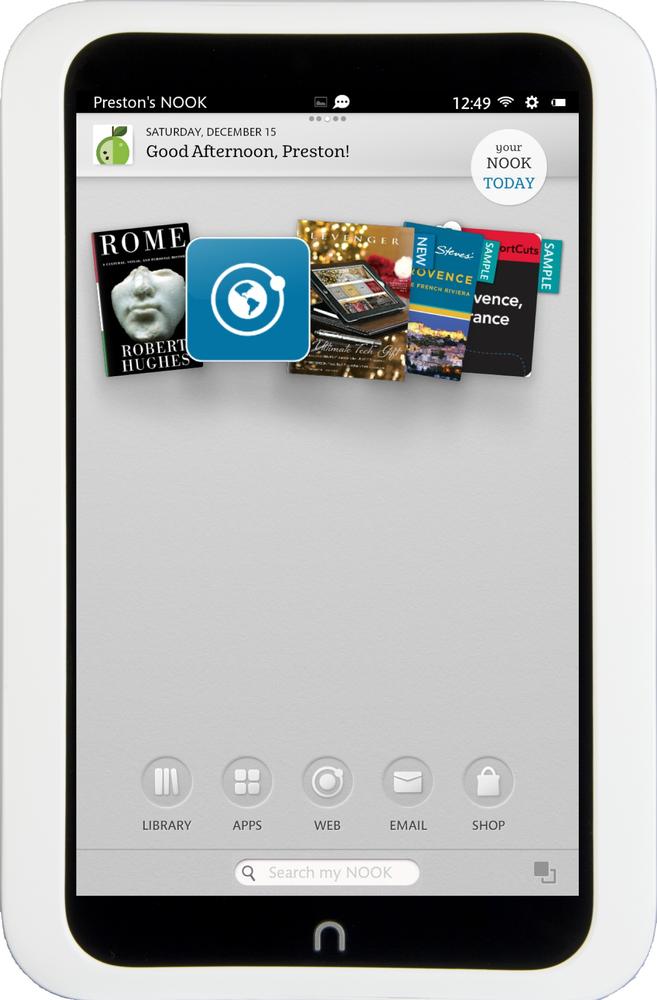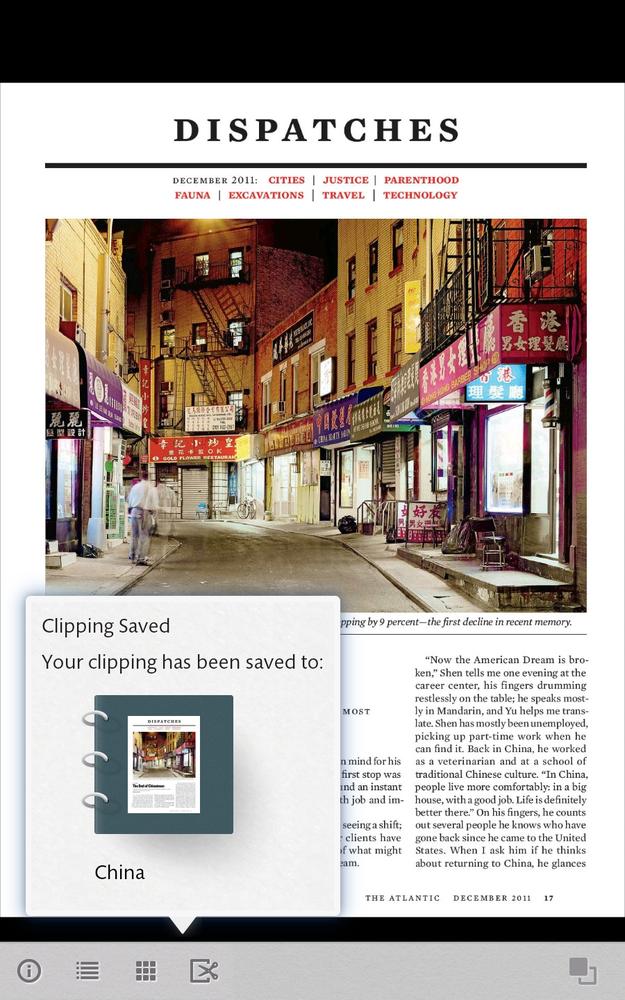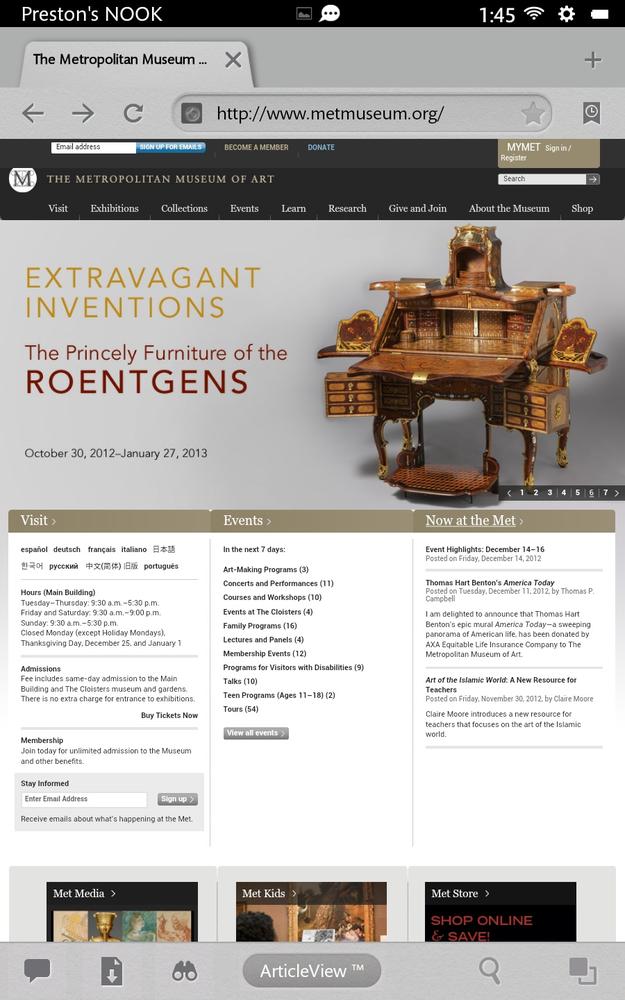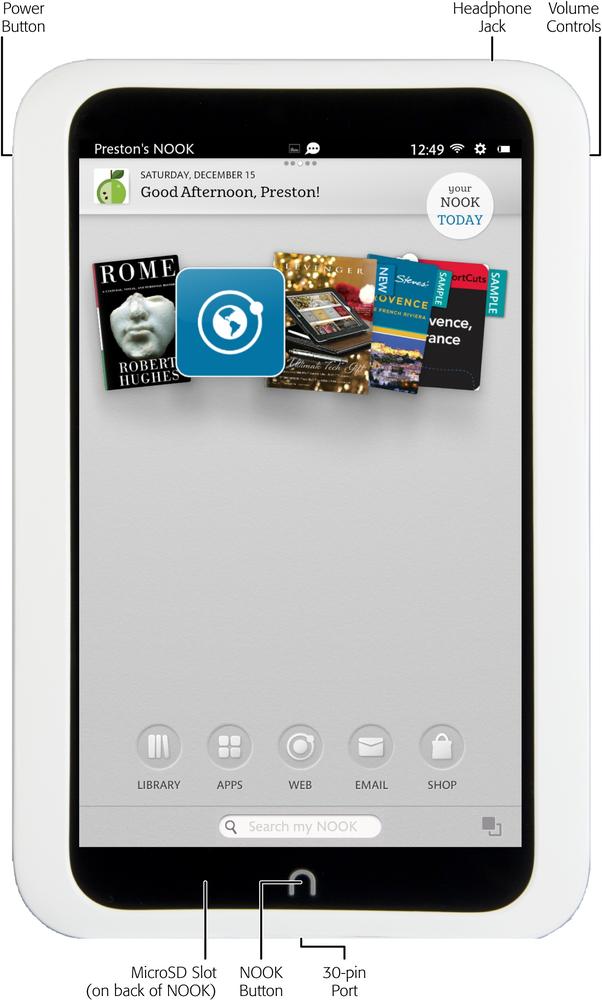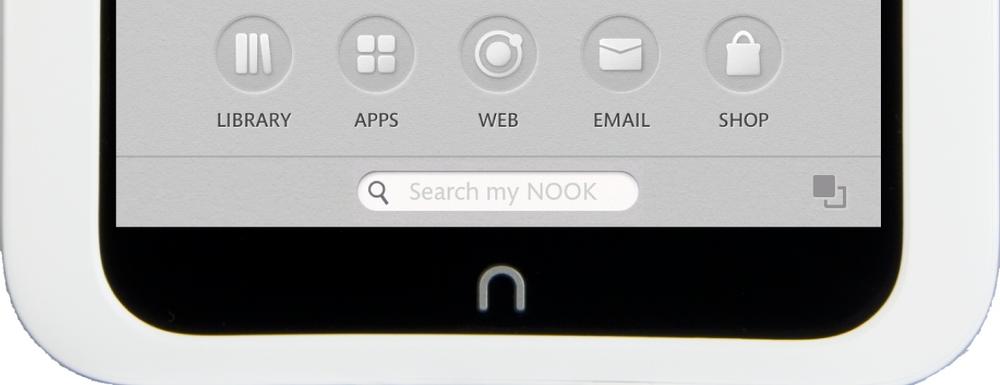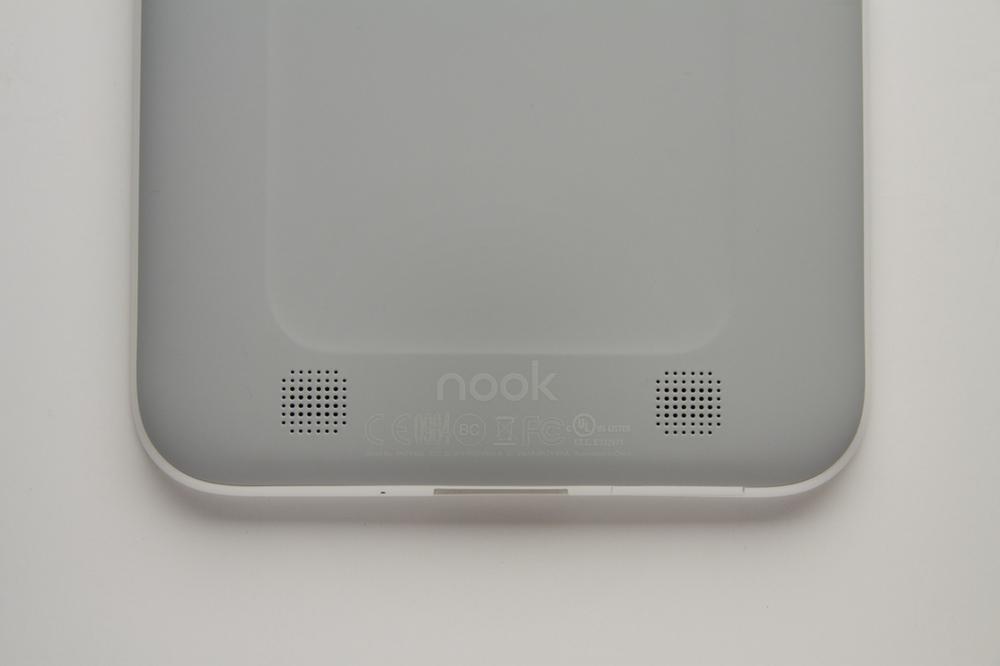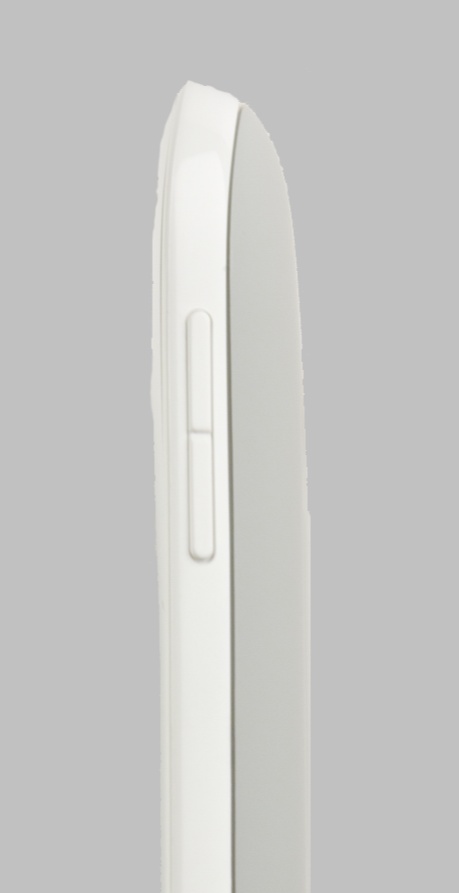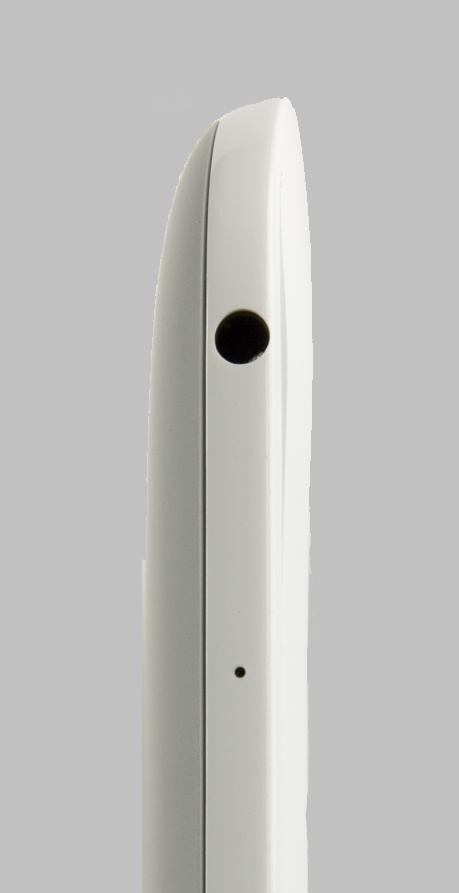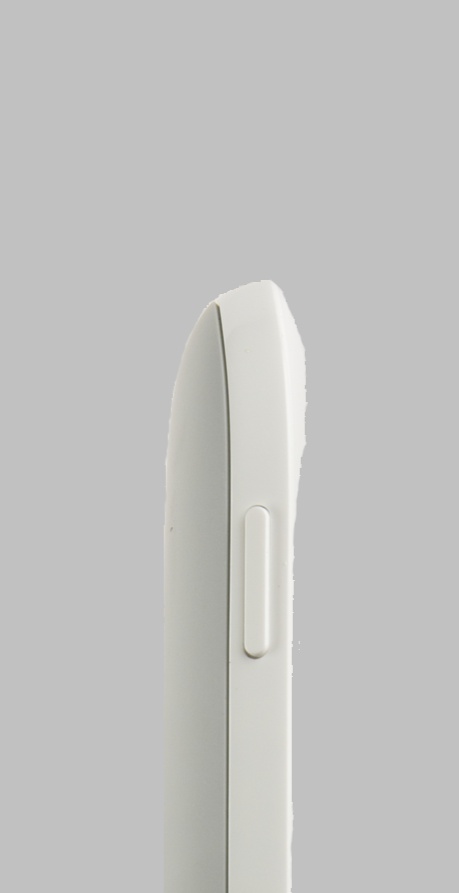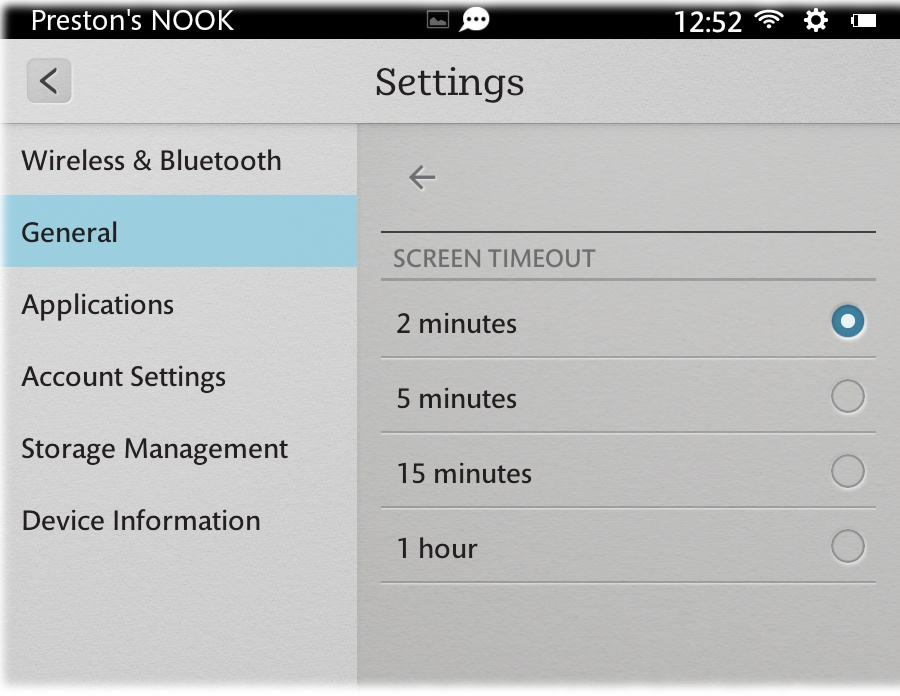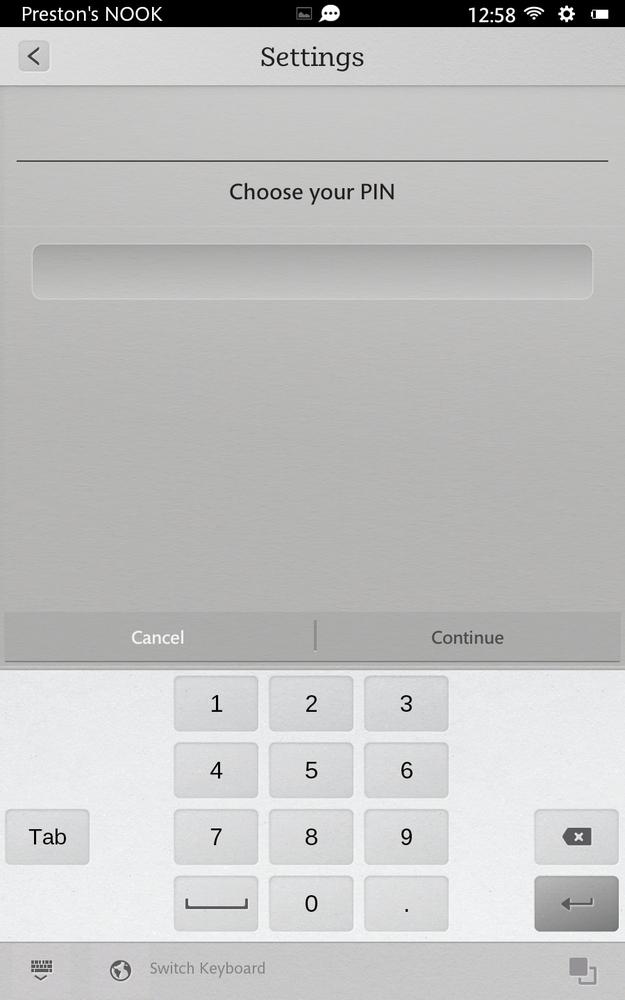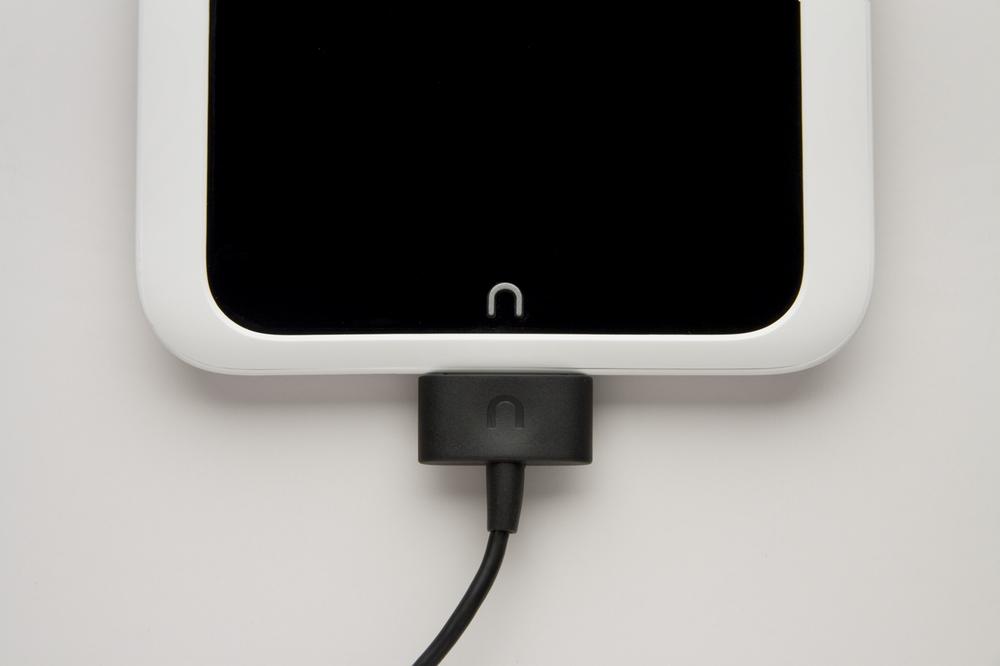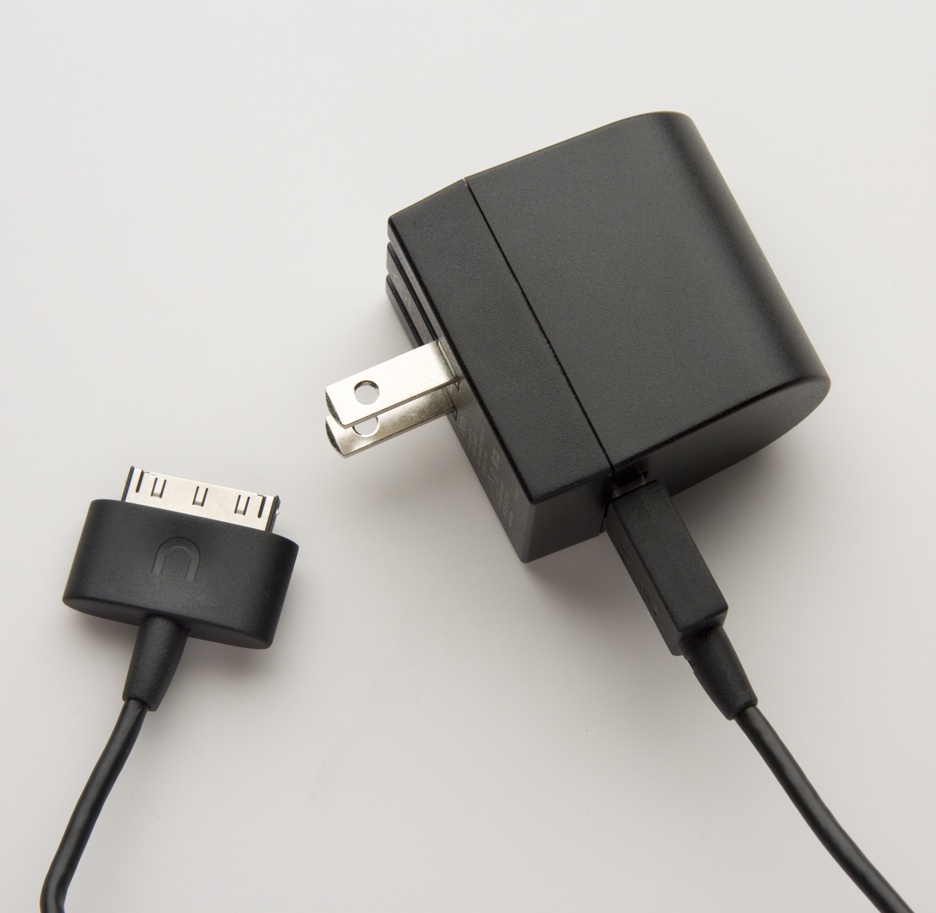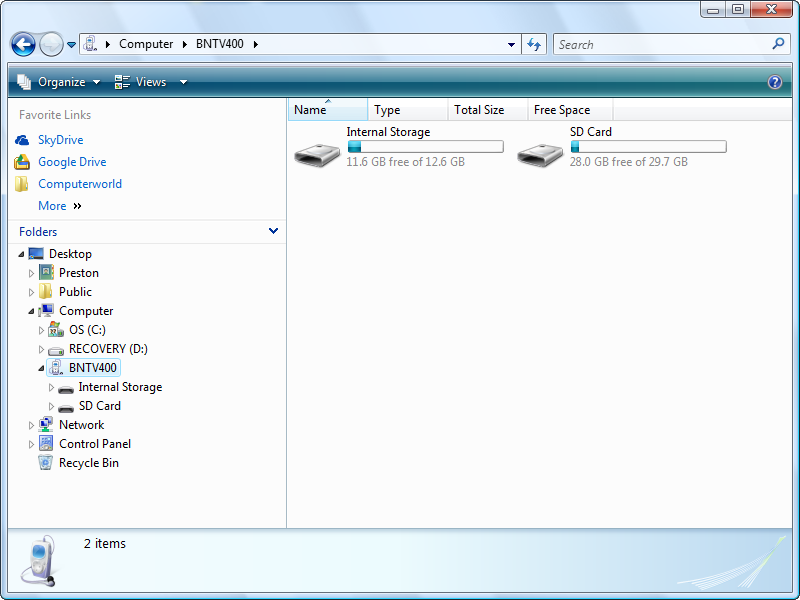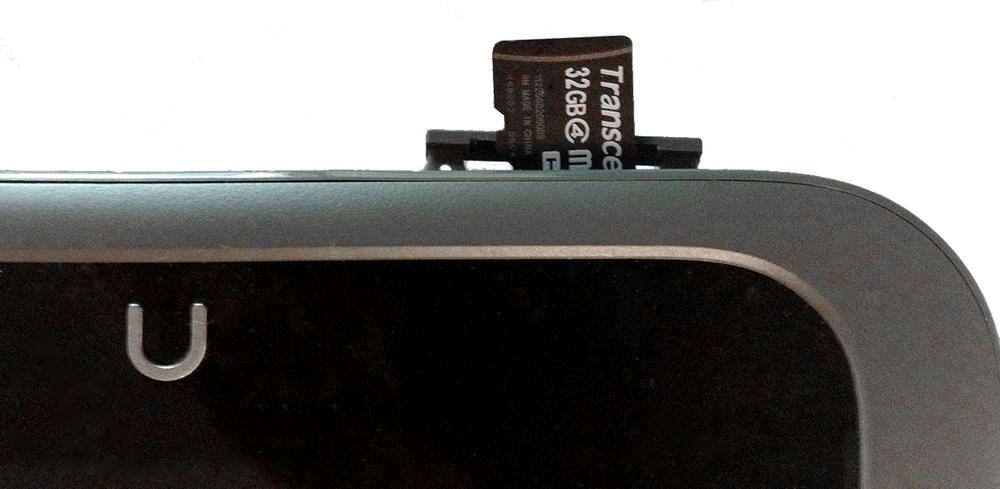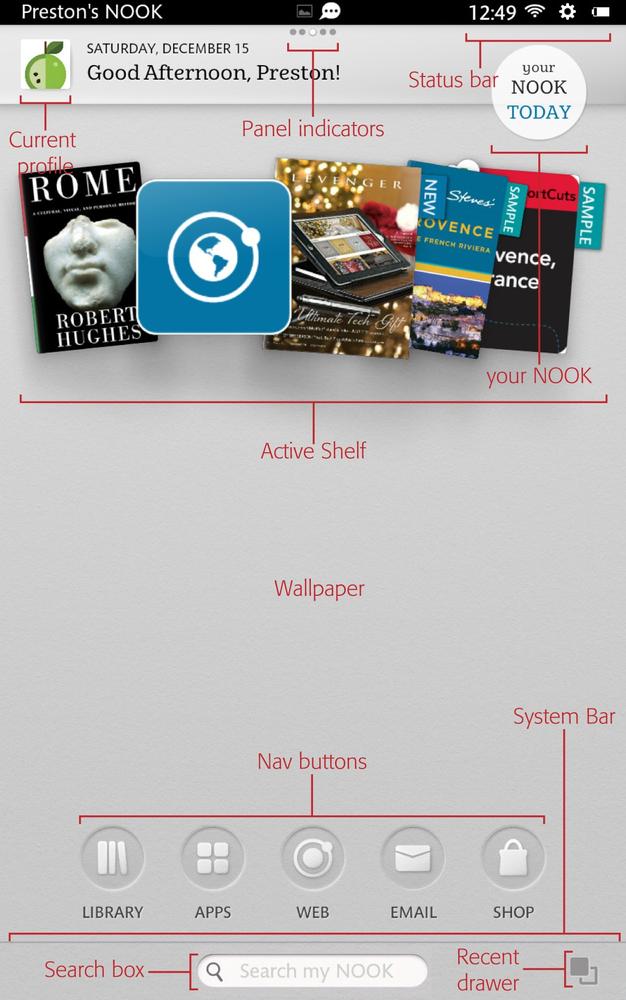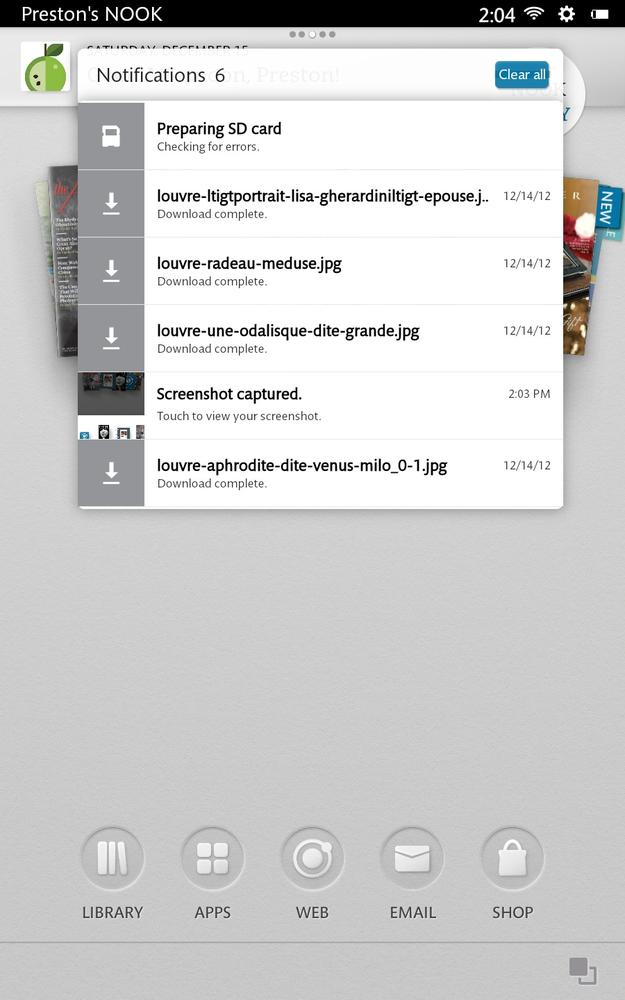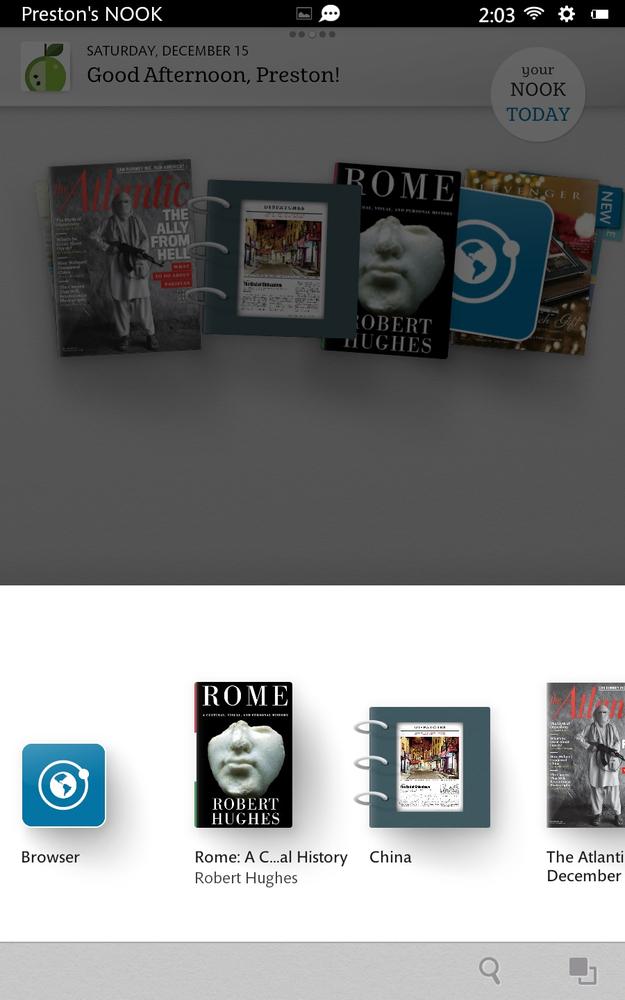WELCOME TO THE NOOK HD, the easy-to-carry, do-everything device that lets you read books, newspapers, and magazines; watch TV and movies; listen to music; browse the Web; check your email; run countless apps…and that’s just for starters. In this chapter, you’ll find out everything it can do, and get a guided tour of the NOOK HD (and NOOK HD+) so you can get up and running quickly.
Note
This book covers the NOOK HD+ as well as the NOOK HD. When the NOOK HD+ differs in any significant way from the NOOK HD, we’ll let you know.
To say that the NOOK HD is a do-everything device is not hyperbole. Take a gander at this list:
Read ebooks. The NOOK HD has been designed from the ground up to be a great ereader. It’s easy on the eyes, lets you carry thousands of books in its thin frame, and adds many reading extras, such as bookmarking, note taking, and more. It lets you get NOOK books from the world’s largest bookstore—2.5 million titles and counting—with most under $10.
View multimedia inside books. With a NOOK HD, books really come alive, because music and video can be embedded right in the book. (Try that with a paperback!) See a recipe you like, and want details about how to make it? A NOOK cookbook can contain videos showing you exactly what to do.
Read interactive kids’ books. Interactive kids’ books can include video and music, and the NOOK HD can read them aloud to kids. In fact, you can record your own voice doing the reading. For details, see Chapter 6.
Borrow and lend books. Just like you can borrow and lend books with your friends, you can do that same thing with many books on your NOOK HD, using the LendMe feature. You’ll even be able to borrow library books on it.
Note
There are some restrictions on borrowing and lending books. For details, see Both a Borrower and a Lender Be.
Read newspapers, catalogs, and magazines. You can read countless newspapers, catalogs, and magazines on your NOOK HD, usually by springing for either a subscription or a single copy (if, for example, the swimsuit issue is all you want).
Create scrapbooks of pages clipped from catalogs and magazines. The NOOK has a very nifty Scrapbook feature for doing just that.
Watch TV, movies, and other videos. The NOOK HD’s spectacular screen lets you watch TV and movies on the built-in NOOK Video service, and on the built-in Hulu Plus app. You can also download and use the Netflix app for watching movies and TV shows. (The apps are free; you have to pay for the services.) There’s also a player you can use for other videos.
Play audiobooks, podcasts, and other audio content. The built-in music player and reader apps do all the work for you, and the NOOK HD makes it easy to find all the audio content your ears desire.
View photos and pictures. There’s a nifty Gallery app built into the NOOK that lets you see photos and pictures in bright, vivid color.
Browse the Web. The NOOK HD has a web browser built right in, so you can visit any website on the Internet and view all of its contents, including videos.
Download and use apps. Dying to play the latest game (Angry Birds, anyone?) or run the latest cool app? The NOOK HD lets you do that, with its built-in Apps store. Many are free, and even for-pay apps are often quite, er…cheap.
Keep track of your contacts. With the NOOK HD’s Contacts app, you can keep track of friends, family, and business acquaintances, and even sync contacts with your Google account.
If you’re the kind of guy or gal who loves specs, read on, because here’s where you’ll learn what’s under the hood. (Don’t care about hardware? Skip to the next section.)
The NOOK HD is powered by a dual core 1.3 GHz (gigahertz) processor and comes with plenty of RAM to run the tablet and all its apps. Not sure what that means? Simple: The NOOK HD is super-fast.
Note
The NOOK HD+ has a slightly faster processor than the NOOK HD—a 1.5 GHz dual-core speed demon. The extra oomph is needed to power the HD+’s larger screen.
You can get two versions of the NOOK HD. One, which costs $199, comes with 8 GB of memory, of which approximately 5 GB is available for your stuff (the other memory is used by the operating system). You can also buy a microSD card with up to an additional 64 GB of memory.
The $229 NOOK HD comes with 16 GB of memory, of which approximately 13 GB is available for your stuff. You can buy a microSD card with an additional 64 GB of memory. Both versions measure about 7-1/2 by 5 inches, and weigh a mere 11.1 ounces at less than half an inch thick. They’ve got great battery life: Up to 10.5 hours for reading, or 9 hours for video.
As for the larger HD+ (it’s got a 9–inch screen instead of the 7-inch screen on the NOOK HD), there’s a $269 model that comes with 16 GB of memory, of which approximately 13 GB is available for your stuff.
The $299 NOOK HD+ comes with 32 GB of memory, of which approximately 28 GB is available for your stuff. As with the less-expensive NOOK HD, you can buy a microSD card with an additional 64 GB of memory with either version. Both versions measure about 9-1/2 by 6-1/2 inches and weigh 18.2 ounces. They’ve got great battery life—up to 10 hours for reading, or 9 hours for video.
The NOOK HD and HD+ both come with a built-in WiFi radio for connecting to hotspots and WiFi networks, a Bluetooth radio for connecting to other Bluetooth devices, as well as all the hardware you’ll read about in the next section.
Down at the bottom of the NOOK HD, you’ll find the NOOK button, which just happens to be in the horseshoe shape of the NOOK symbol. If the tablet is sleeping (see Power Button), pressing the NOOK button wakes it up. If the tablet is already awake, pressing the button brings you to the Home screen (about which you’ll learn more on Home Screen).
Turn over your NOOK HD, and you’ll see the stereo speakers near the bottom. Many apps have built-in volume controls, but the NOOK HD has physical volume buttons as well. Find them on the righthand side of the tablet, up near the top. Pressing the top button increases the volume; pressing the bottom button turns it down.
Tip
At times—especially when watching certain TV shows or movies—you may find that even at maximum volume, the speakers’ sounds are too low. Plugging earphones into the headphone jack, as described next, should help you hear better, and connecting external speakers to the headphone jack usually gives you more sound, too.
Near the upper-right corner of the NOOK HD, you’ll see a headphone jack. There’s no magic to how it works—plug in headphones or an external speaker, and you’re ready to go.
In the NOOK HD’s upper-left corner lives the power button. Hold it for a second or two to turn off your NOOK HD; hold it again for a second or two to turn it back on.
If your NOOK HD’s screen stayed on all the time, it’d burn up battery life pretty quickly. So if the tablet detects that you haven’t used it in a while, it blacks out the screen and locks it. In other words, the NOOK HD goes to sleep.
Normally, if you’re not using your tablet for 2 minutes, the screen blacks out. But if you’d like, you can increase that interval. Press the NOOK button to get to the Home screen. Then, in the upper-right portion of the NOOK’s screen, tap the small icon that looks like a gear; from the screen that appears, select All Settings→General→“Screen timeout,” and from the next screen, select the interval you’d like, anywhere from 2 minutes to 1 hour.
When the screen blacks out, to make it come to life again, press either the NOOK button or the power button. The tablet wakes from its slumber. Slide the onscreen button (which is an icon of an apple or animal or something—you choose this image when you create a profile) toward the lock at the center of the screen to unlock it.
Anyone can wake your tablet like this, not just you, so if you’re worried about security, you can lock your tablet so that only someone with a password can use it:
Press the NOOK button to get to the Home screen. Then, in the upper-right portion of the NOOK’s screen, press the small icon that looks like a gear. A settings screen appears.
Select All Settings→General→Security and then tap the “Screen lock” listing. A screen appears asking if you want to set up a passcode.
Tap “Set Passcode,” type the password you want to use, and then select Continue.
From then on, the only way to unlock the NOOK HD is to enter the passcode after waking it from sleep.
At its bottom, the NOOK HD has a 30-pin port, and it serves double duty. The tablet comes with a special cable that has a 30-pin connector at one end and a USB connector on the other end. Plug the cable’s 30-pin connector to the port, plug the USB connector into a special power adapter that comes with your NOOK, and then plug the power adapter into a wall outlet. That’s how you charge your NOOK HD.
But the 30-pin port and USB cable do more than just drink in power. If you plug the other end of the cable into your PC or Mac instead of a wall, it lets you transfer files between your computer (either PC or Mac) and the NOOK HD. As you’ll see in Chapter 12, it’s a great way to transfer music or other media files from your computer to your NOOK HD.
To transfer files, open up Windows Explorer on your PC, or Finder on your Mac. The NOOK HD looks like any other USB drive, so move files just as you would normally between a USB drive and your computer.
At the top edge of the NOOK HD, to the left of the headphone jack, you’ll see a tiny hole. That’s the microphone. Yes, it’s small, but it does the job very well.
Use your NOOK HD for more than a few moments, and you’ll notice that the 7-inch screen is nice and bright, and fully laminated to help reduce glare. If you’re a techie, you’ll like to know that it’s got a resolution of 1440 by 600 pixels, with 243 pixels per inch. That’s a lot of pixels packed into a small space. That’s why it’s great not just for reading books, but watching movies and TV. It gives you a full 720p display.
As for the HD+, its 9-inch screen is even more impressive: a 1920 by 1280 pixel resolution at 256 pixels per inch. And it displays video at a full 1080 HD.
Unlike other ereaders, the NOOK HD comes with a slot where you can add plenty of extra storage—up to a whopping 64 GB. All you need to do is buy a microSD card, available in pretty much any electronics store as well as online. Prices vary, of course, but if you shop around you should be able to find one for under $50. As you’ll see on Installing an SD Card, it’s easy to install.
On your NOOK HD, just to the left of the 30-pin port, there’s a small plastic lid. Pull it, and you’ll expose the slot for the SD card. Insert the card, close the lid, and you’re ready to go.
On the NOOK HD, just like in The Wizard of Oz, there’s no place like home. Get used to the Home screen because you’ll be spending plenty of time there, finding books to read, navigating your tablet and checking its status, and much more. Press the NOOK button to get there.
You’ll explore the Home screen in much more detail in Chapter 3, but here’s a brief rundown of what you’ll find:
Status bar. As the name says, this area tells you what’s going on with your NOOK HD—whether you’re connected to a WiFi network, the current time, and your battery life. Any notifications you get appear in the middle of the Status bar. Tap there, and a screen drops down showing all of your notifications. Tap a notification for more details. For example, if you tap a file that’s been downloaded, tapping it will open it in an app—like a photo in the Gallery.
Your NOOK Today. Tap this button to check for recent information, such as the weather and recommendations for reading and videos based on your most recent library activity. When you tap the button, its name changes to “your NOOK.” Tap that button to return to the normal main screen.
Current Profile. As you’ll see in Chapter 4, the NOOK lets you create separate profiles for the people who use it. This button identifies the current profile. Tap it to switch to a different profile or create a new one.
Active Shelf. At the top of the Home screen is the Active Shelf, which holds the books, apps, magazines, and newspapers that you’ve recently bought (or borrowed or downloaded). The shelf is a carousel. Swipe it, and you reveal more content. Tap any book, newspaper, or magazine you want to read or app you want to run.
Recent Drawer. Tap here and you’ll see a list of books, apps, and other items you’ve recently opened. Swipe to the right to see more than are displayed.
Search box. Tapping here lets you launch a search. You can search your entire NOOK and its apps, as well as the NOOK Shop and the Web.
Note
The Recent Drawer and the Search box are part of an area called the System bar. The System bar changes at times, depending on what you’re doing on the NOOK. In the Library, for example, you’ll also find an icon for opening the Library menu and in the Shop you’ll find a heart icon that, when tapped, displays your Wish List.
Panel indicators. With the NOOK HD, you get five different Home panels, not just one. Why more than one panel? You get more room to put books, apps, and icons on the screen. The white button indicates which of the three Home screens you’re currently viewing. Swipe to the left or right to get to another one.
Nav buttons. Tap on the appropriate button to jump to the Library, Apps, the web browser, the E-mail app, and the NOOK Shop.
Wallpaper. Your NOOK’s Home screen has wallpaper on it, just like a computer does. And just as on a computer, you can change the wallpaper. See Changing Your Wallpaper for details.
Get NOOK HD: The Missing Manual, 2nd Edition now with the O’Reilly learning platform.
O’Reilly members experience books, live events, courses curated by job role, and more from O’Reilly and nearly 200 top publishers.
